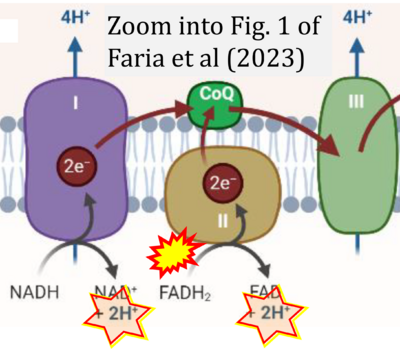Faria 2023 Pharmaceutics
| Faria R, Boisguérin P, Sousa Â, Costa D (2023) Delivery systems for mitochondrial gene therapy: a review. Pharmaceutics 15:572. https://doi.org/10.26124/mitofit:2023-0003.v610.3390/pharmaceutics15020572 |
Faria R, Boisguerin P, Sousa A, Costa D (2023) Pharmaceutics
Abstract: Mitochondria are membrane-bound cellular organelles of high relevance responsible for the chemical energy production used in most of the biochemical reactions of cells. Mitochondria have their own genome, the mitochondrial DNA (mtDNA). Inherited solely from the mother, this genome is quite susceptible to mutations, mainly due to the absence of an effective repair system. Mutations in mtDNA are associated with endocrine, metabolic, neurodegenerative diseases, and even cancer. Currently, therapeutic approaches are based on the administration of a set of drugs to alleviate the symptoms of patients suffering from mitochondrial pathologies. Mitochondrial gene therapy emerges as a promising strategy as it deeply focuses on the cause of mitochondrial disorder. The development of suitable mtDNA-based delivery systems to target and transfect mammalian mitochondria represents an exciting field of research, leading to progress in the challenging task of restoring mitochondria's normal function. This review gathers relevant knowledge on the composition, targeting performance, or release profile of such nanosystems, offering researchers valuable conceptual approaches to follow in their quest for the most suitable vectors to turn mitochondrial gene therapy clinically feasible. Future studies should consider the optimization of mitochondrial genes' encapsulation, targeting ability, and transfection to mitochondria. Expectedly, this effort will bring bright results, contributing to important hallmarks in mitochondrial gene therapy.
• Bioblast editor: Gnaiger E
Correction: FADH2 and Complex II
- FADH2 is shown as the substrate feeding electrons into Complex II (CII). This is wrong and requires correction - for details see Gnaiger (2024).
- Gnaiger E (2024) Complex II ambiguities ― FADH2 in the electron transfer system. J Biol Chem 300:105470. https://doi.org/10.1016/j.jbc.2023.105470 - »Bioblast link«
Hydrogen ion ambiguities in the electron transfer system
Communicated by Gnaiger E (2023-10-08) last update 2023-11-10
- Electron (e-) transfer linked to hydrogen ion (hydron; H+) transfer is a fundamental concept in the field of bioenergetics, critical for understanding redox-coupled energy transformations.
- However, the current literature contains inconsistencies regarding H+ formation on the negative side of bioenergetic membranes, such as the matrix side of the mitochondrial inner membrane, when NADH is oxidized during oxidative phosphorylation (OXPHOS). Ambiguities arise when examining the oxidation of NADH by respiratory Complex I or succinate by Complex II.
- Oxidation of NADH or succinate involves a two-electron transfer of 2{H++e-} to FMN or FAD, respectively. Figures indicating a single electron e- transferred from NADH or succinate lack accuracy.
- The oxidized NAD+ is distinguished from NAD indicating nicotinamide adenine dinucleotide independent of oxidation state.
- NADH + H+ → NAD+ +2{H++e-} is the oxidation half-reaction in this H+-linked electron transfer represented as 2{H++e-} (Gnaiger 2023). Putative H+ formation shown as NADH → NAD+ + H+ conflicts with chemiosmotic coupling stoichiometries between H+ translocation across the coupling membrane and electron transfer to oxygen. Ensuring clarity in this complex field is imperative to tackle the apparent ambiguity crisis and prevent confusion, particularly in light of the increasing number of interdisciplinary publications on bioenergetics concerning diagnostic and clinical applications of OXPHOS analysis.
Labels: MiParea: mtDNA;mt-genetics
Enzyme: Complex II;succinate dehydrogenase




